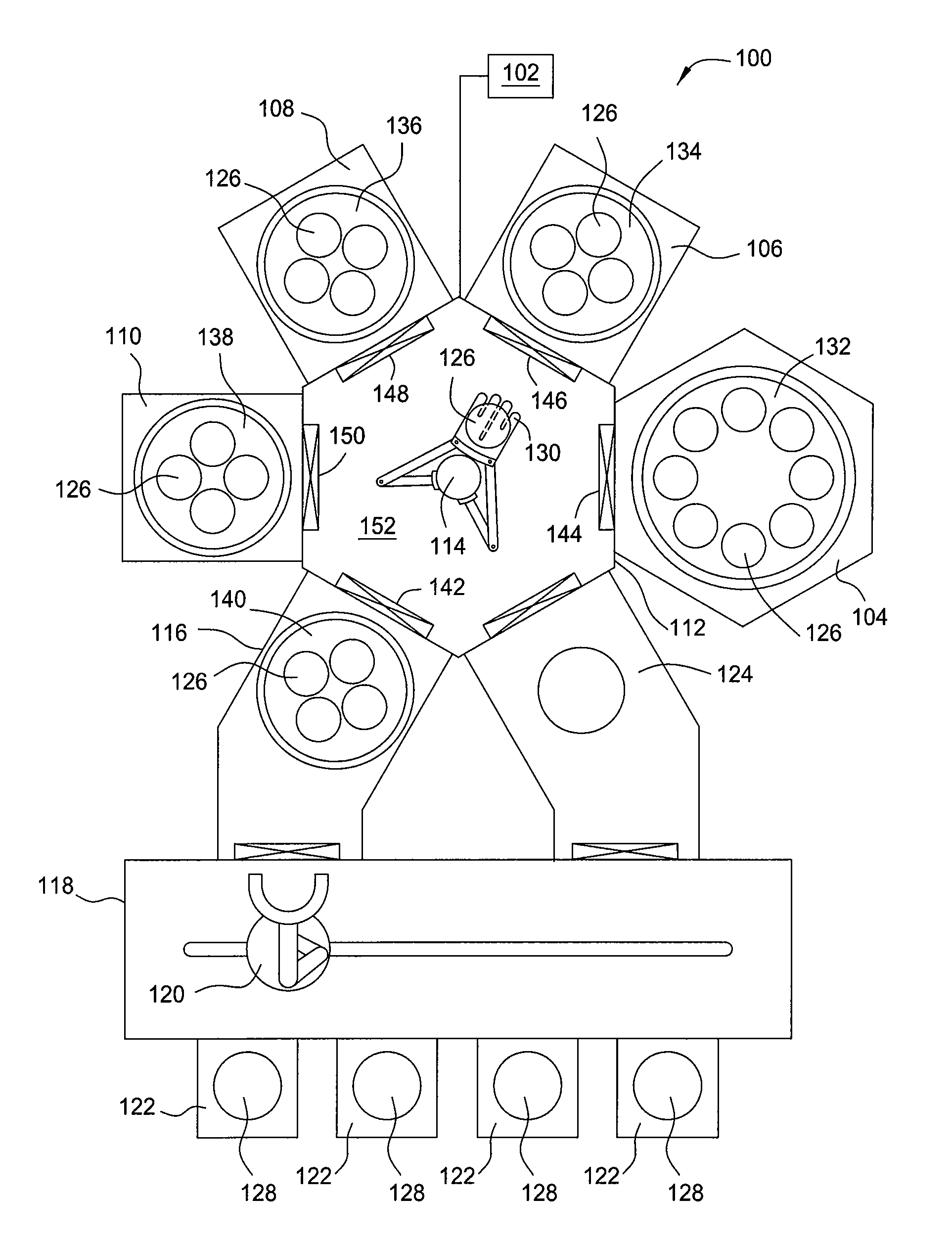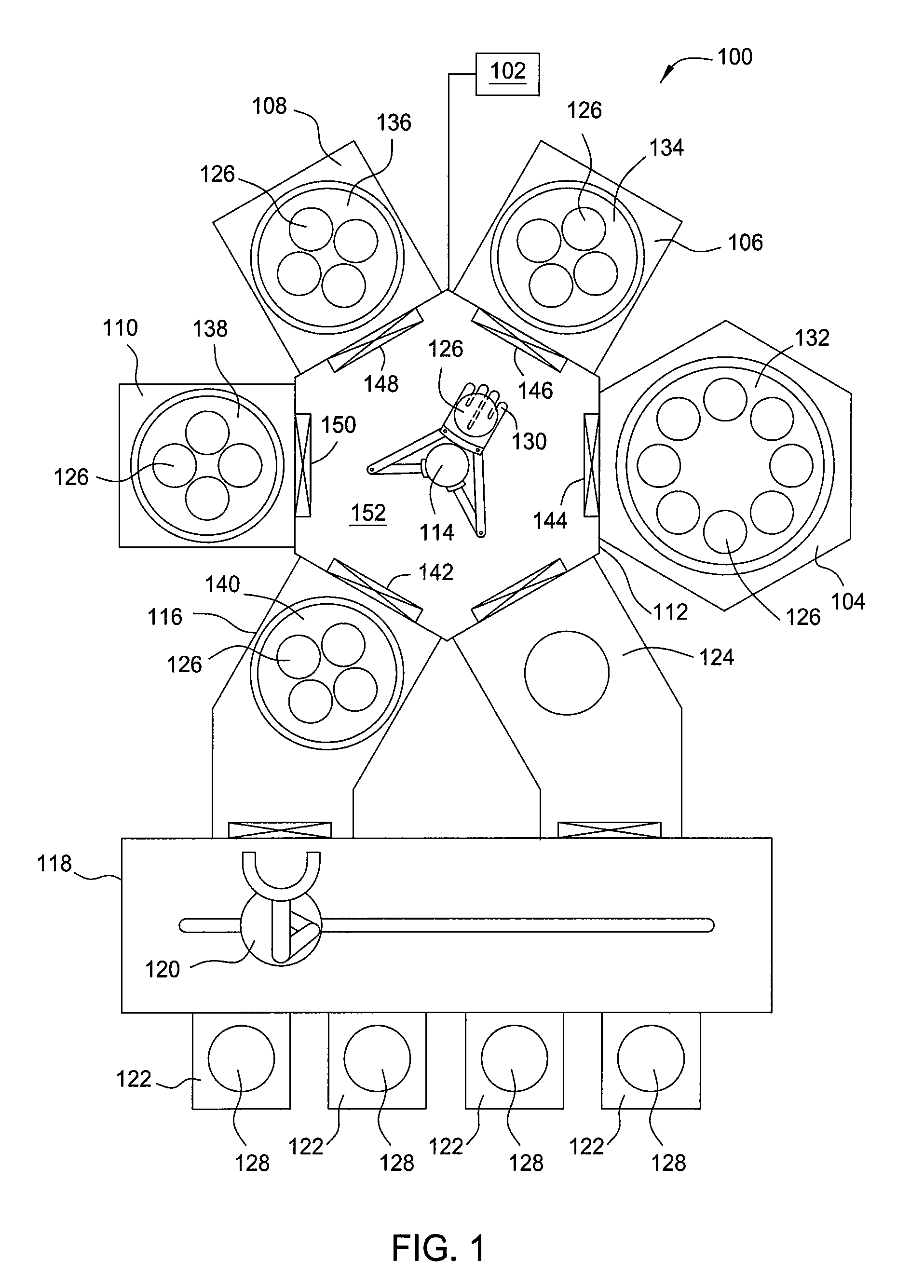Segmented substrate loading for multiple substrate processing
- Summary
- Abstract
- Description
- Claims
- Application Information
AI Technical Summary
Benefits of technology
Problems solved by technology
Method used
Image
Examples
Embodiment Construction
[0030]Embodiments of the present invention provide apparatus and methods for loading and unloading a processing chamber configured to process multiple substrates. More particularly, embodiments of the present invention provide apparatus and methods for loading and unloading a processing chamber in a segment by segment manner. Embodiments of the present invention also provide apparatus and methods for transferring multiple substrates in and out a processing chamber without transferring substrate supporting trays in and out the processing chamber.
[0031]FIG. 1 is a plan view of a cluster tool 100 for multiple-substrate processing in accordance with one embodiment of the present invention. The cluster tool 100 generally creates a processing environment where various processes can be performed to a substrate. In one embodiment, the cluster tool 100 is to fabricate compound nitride semiconductor devices, such as such as light emitting diodes (LEDs), a laser diodes (LDs), and power electro...
PUM
 Login to View More
Login to View More Abstract
Description
Claims
Application Information
 Login to View More
Login to View More - R&D
- Intellectual Property
- Life Sciences
- Materials
- Tech Scout
- Unparalleled Data Quality
- Higher Quality Content
- 60% Fewer Hallucinations
Browse by: Latest US Patents, China's latest patents, Technical Efficacy Thesaurus, Application Domain, Technology Topic, Popular Technical Reports.
© 2025 PatSnap. All rights reserved.Legal|Privacy policy|Modern Slavery Act Transparency Statement|Sitemap|About US| Contact US: help@patsnap.com



